Quiz Summary
0 of 51 Questions completed
Questions:
Information
You have already completed the quiz before. Hence you can not start it again.
Quiz is loading…
You must sign in or sign up to start the quiz.
You must first complete the following:
Results
Results
0 of 51 Questions answered correctly
Your time:
Time has elapsed
You have reached 0 of 0 point(s), (0)
Earned Point(s): 0 of 0, (0)
0 Essay(s) Pending (Possible Point(s): 0)
Categories
- Not categorized 0%
- 1
- 2
- 3
- 4
- 5
- 6
- 7
- 8
- 9
- 10
- 11
- 12
- 13
- 14
- 15
- 16
- 17
- 18
- 19
- 20
- 21
- 22
- 23
- 24
- 25
- 26
- 27
- 28
- 29
- 30
- 31
- 32
- 33
- 34
- 35
- 36
- 37
- 38
- 39
- 40
- 41
- 42
- 43
- 44
- 45
- 46
- 47
- 48
- 49
- 50
- 51
- Current
- Review
- Answered
- Correct
- Incorrect
-
Question 1 of 51
1. Question
An osteon is how long:
CorrectIncorrectHint
Find the answer in section A: Click here
-
Question 2 of 51
2. Question
Osteons are like logs in that they have rings. The log-like osteons grow side-by-side with each other in bones.
CorrectIncorrectHint
Find the answer in section A: Click here
-
Question 3 of 51
3. Question
Giant Sequoia trees may have a thousand rings or more, but the maximum amount of rings that an osteon has is about 200.
CorrectIncorrectHint
Find the answer in section A: Click here
-
Question 4 of 51
4. Question
The tube (C is pointing to one layer of it) that has concentric circles (rings) which are protruding out from the rest of the tubes is:
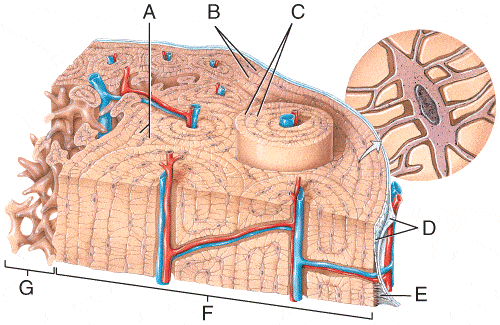 CorrectIncorrect
CorrectIncorrectHint
Find the answer in section A: Click here
-
Question 5 of 51
5. Question
Osteons are about as wide as a cat’s whisker.
CorrectIncorrectHint
Find the answer in section B: Click here
-
Question 6 of 51
6. Question
One lamellae layer in bone (a ring) is 7-8 inches wide which is about as wide as a red blood cell.
CorrectIncorrectHint
Find the answer in section B: Click here
-
Question 7 of 51
7. Question
Lamellae means “thin layer”. A tree ring has what can be called lamellae and so does a gecko’s foot. The dark “lamellae rings” of wood are the winter growth of the wood.
CorrectIncorrectHint
Find the answer in section C: Click here
-
Question 8 of 51
8. Question
Mushroom “gills” (The straight lines below) are where spores are made. The are also called lamellae.
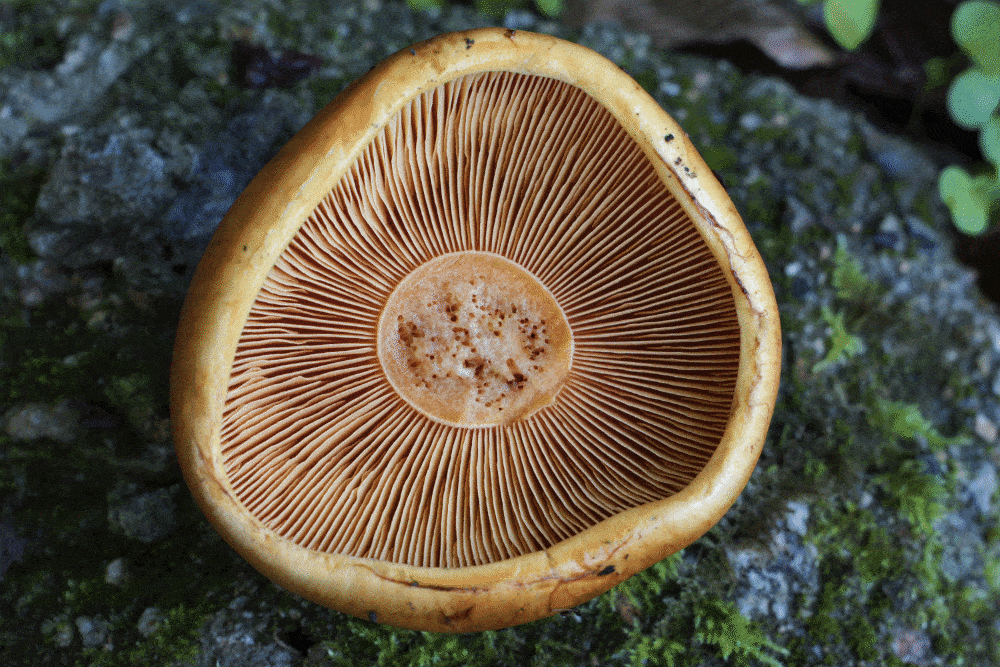 CorrectIncorrect
CorrectIncorrectHint
Find the answer in section D: Click here
-
Question 9 of 51
9. Question
A mushroom spore has all the mushroom DNA in it to make a new mushroom fungus.
CorrectIncorrectHint
Find the answer in section D: Click here
-
Question 10 of 51
10. Question
Mushroom gill lamellae (the straight lines above) increase the surface area to make leaves for the fungus.
CorrectIncorrectHint
Find the answer in section D: Click here
-
Question 11 of 51
11. Question
Fish gill lamellae (secondary) stand up straight. The blood flow in them runs the opposite direction to the water flow coming in through the gills.
CorrectIncorrectHint
Find the answer in section E: Click here
-
Question 12 of 51
12. Question
A tuna fish can weigh up to 1500 pounds!
CorrectIncorrectHint
Find the answer in section E: Click here
-
Question 13 of 51
13. Question
What covers the gills to protect them is the skin layer called the popacitum.
CorrectIncorrectHint
Find the answer in section E: Click here
-
Question 14 of 51
14. Question
A nudibranch sea slug has very unusual gills. They are located in the slime-secreting “foot” that it slides on.
CorrectIncorrectHint
Find the answer in section F: Click here
-
Question 15 of 51
15. Question
Between the osteon rings there are living osteocytes which are imprisoned in bone.
CorrectIncorrectHint
Find the answer in section G: Click here
-
Question 16 of 51
16. Question
There is a pipe—a cave—in the center of each osteon called the Haversian Canal. In this hollow tube there are blood vessels, lymph “pipes” and nerves.
CorrectIncorrectHint
Find the answer in section G: Click here
-
Question 17 of 51
17. Question
The trabeculae bone in this picture are also called:
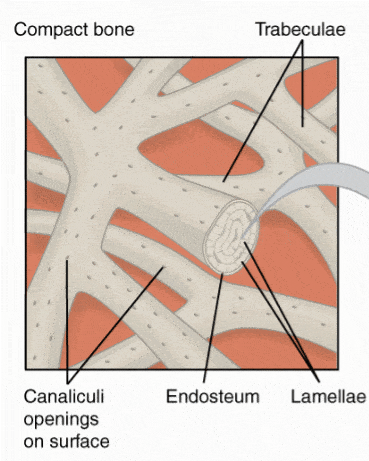 CorrectIncorrect
CorrectIncorrectHint
Find the answer in section H: Click here
-
Question 18 of 51
18. Question
The pinpoint openings in the trabeculae spongy bone above lead to “caves” called canaliculi.
CorrectIncorrectHint
Find the answer in section H: Click here
-
Question 19 of 51
19. Question
The gentle Clydesdale horse can weigh 4000-pounds. He has a massive number of caves in his bones!
CorrectIncorrectHint
Find the answer in section I: Click here
-
Question 20 of 51
20. Question
The fluid flowing through the canaliculi “bone caves” gives the living osteocyte cell ”prisoners” food and oxygen.
CorrectIncorrectHint
Find the answer in section J: Click here
-
Question 21 of 51
21. Question
Osteoblast cells get buried and go through a type of metamorphosis (a change) which makes them into osteocyte cells.
CorrectIncorrectHint
Find the answer in section J: Click here
-
Question 22 of 51
22. Question
Canaliculi caves are found in the super-dense, super-hard compact teeth. They play a critical part in keeping imprisoned osteocytes alive.
CorrectIncorrectHint
Find the answer in section K: Click here
-
Question 23 of 51
23. Question
There are 1 million osteon logs laying side-by-side in a cubic inch of compact bone.
CorrectIncorrectHint
Find the answer in section L: Click here
-
Question 24 of 51
24. Question
An osteon is about the exact size of an upper eyelash.
CorrectIncorrectHint
Find the answer in section L: Click here
-
Question 25 of 51
25. Question
About ten living osteocyte cells are buried in each lamellae ring of an osteon.
CorrectIncorrectHint
Find the answer in section L: Click here
-
Question 26 of 51
26. Question
This amazing picture shows canaliculi as red snake-like tubes which interconnect with each other.
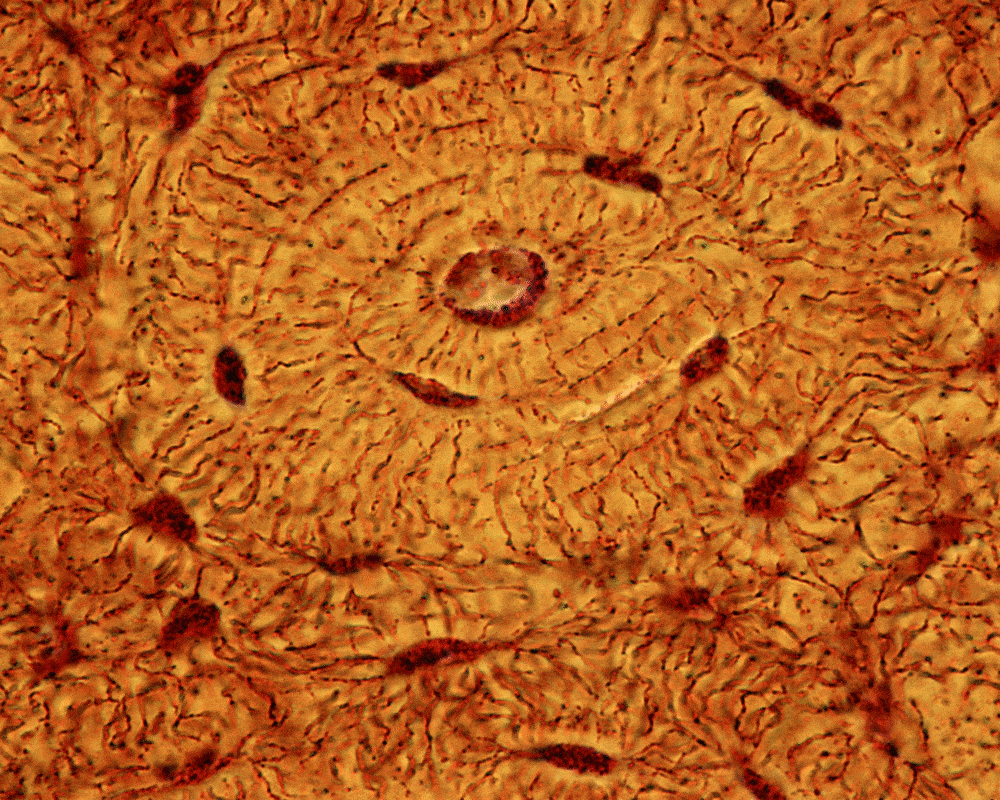 CorrectIncorrect
CorrectIncorrectHint
Find the answer in section M: Click here
-
Question 27 of 51
27. Question
The dark spots in the picture above are living buried osteocytes.
CorrectIncorrectHint
Find the answer in section M: Click here
-
Question 28 of 51
28. Question
The dark circle in the center of the osteon above is the centriole.
CorrectIncorrectHint
Find the answer in section M: Click here
-
Question 29 of 51
29. Question
There are living cells called osteoblasts and osteoclasts on the outside ring of each osteon.
CorrectIncorrectHint
Find the answer in section N: Click here
-
Question 30 of 51
30. Question
The life of a tiger is dependent on the molecular structure of its bones being correct. If it wasn’t, the bones of the tiger would break and the tiger would die.
CorrectIncorrectHint
Find the answer in section N: Click here
-
Question 31 of 51
31. Question
In a BB-sized amount of compact bone there are more than ten thousand buried living osteocyte cells.
CorrectIncorrectHint
Find the answer in section O: Click here
-
Question 32 of 51
32. Question
This is an accurate computer-generated image of a dust-sized amount of a mouse’s brain. It took a lab at Harvard 5 years to put this image together.
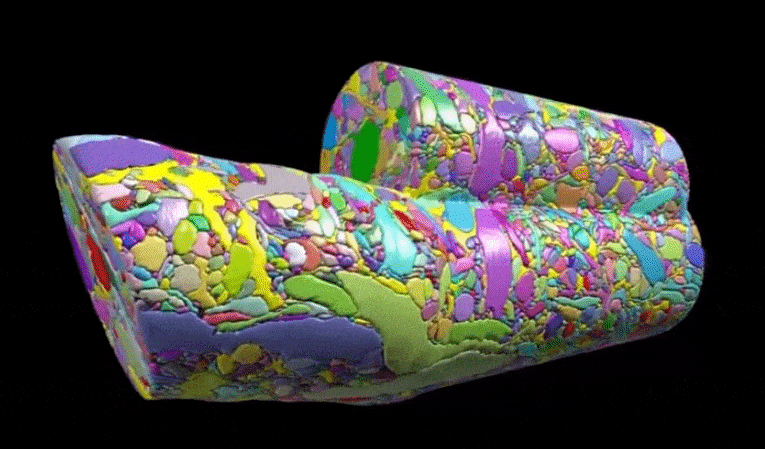 CorrectIncorrect
CorrectIncorrectHint
Find the answer in section P: Click here
-
Question 33 of 51
33. Question
The colored parts of the image above are the blood pipes in the mouse’s brain.
CorrectIncorrectHint
Find the answer in section P: Click here
-
Question 34 of 51
34. Question
The image below is an actual picture of compact bone taken by an electron microscope.
 CorrectIncorrect
CorrectIncorrectHint
Find the answer in section Q: Click here
-
Question 35 of 51
35. Question
When bone grows wider like it does when you grow bigger, each hair-like osteon that makes up your bones grow new rings.
CorrectIncorrectHint
Find the answer in section Q: Click here
-
Question 36 of 51
36. Question
Each of the ring layers in the picture above is a lamellae layer.
CorrectIncorrectHint
Find the answer in section Q: Click here
-
Question 37 of 51
37. Question
The big dot in the center of each osteon above is the Boat Canal.
CorrectIncorrectHint
Find the answer in section Q: Click here
-
Question 38 of 51
38. Question
The sand-like spots around each ring are the buried-alive cells.
CorrectIncorrectHint
Find the answer in section Q: Click here
-
Question 39 of 51
39. Question
The larger osteons in the picture above are 200 millimeters across.
CorrectIncorrectHint
Find the answer in section Q: Click here
-
Question 40 of 51
40. Question
The two “canals” (caves) in bone are called the canaliculi and the Haversian Canals.
CorrectIncorrectHint
Find the answer in section R: Click here
-
Question 41 of 51
41. Question
The Haversian Canals in the bones have to allow the blood to leave the bone once the blood has given up its oxygen.
CorrectIncorrectHint
Find the answer in section R: Click here
-
Question 42 of 51
42. Question
Compact bone and cortical bone are different kinds of bone.
CorrectIncorrectHint
Find the answer in section R: Click here
-
Question 43 of 51
43. Question
If the blood piping was plumbed incorrectly in bones, all living things with bones would die.
CorrectIncorrectHint
Find the answer in section R: Click here
-
Question 44 of 51
44. Question
High-speed soccer players, gymnasts and basketball players are continually damaging their bones. Their bones have to be able to repair themselves.
CorrectIncorrectHint
Find the answer in section R: Click here
-
Question 45 of 51
45. Question
If the blood didn’t flow correctly in the bones, the imprisoned osteocytes would die.
CorrectIncorrectHint
Find the answer in section S: Click here
-
Question 46 of 51
46. Question
The picture below shows that the blood vessels in the Haversian Canals are inter-connected.
 CorrectIncorrect
CorrectIncorrectHint
Find the answer in section S: Click here
-
Question 47 of 51
47. Question
The maze-like bone on the far left of the picture above is what kind of bone?
CorrectIncorrectHint
Find the answer in section S: Click here
-
Question 48 of 51
48. Question
As a person grows older, their bones grow longer and wider.
CorrectIncorrectHint
Find the answer in section S: Click here
-
Question 49 of 51
49. Question
An older person like Michael Jordan the basketball player would have bones which would have been hugely helped through the years by cells living in them.
 CorrectIncorrect
CorrectIncorrectHint
Find the answer in section T: Click here
-
Question 50 of 51
50. Question
Imprisoned osteocytes can be a whopping 125-years old!
CorrectIncorrectHint
Find the answer in section U: Click here
-
Question 51 of 51
51. Question
List 5 summaries of the devotional parts in this article and give a different personal application to each.
-
This response will be awarded full points automatically, but it can be reviewed and adjusted after submission.
Grading can be reviewed and adjusted.Grading can be reviewed and adjusted. -